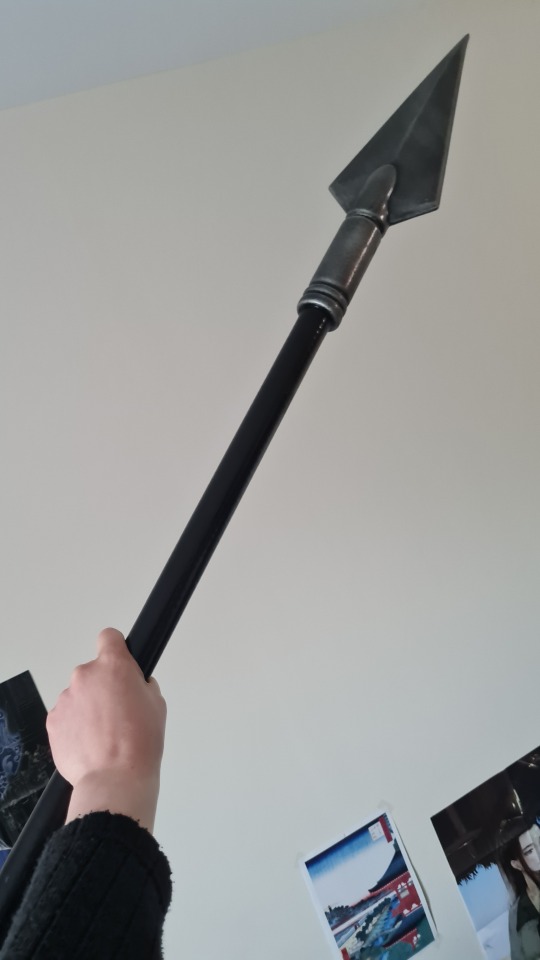Text
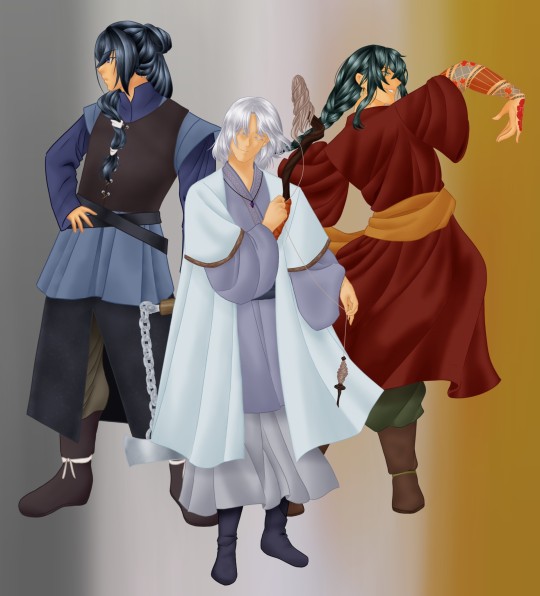
The trio put together! I'm not stoked with how the background turned out— FireAlpaca starts acting weird and laggy whenever I use a brush size larger than 100— and blending and blurring these three backgrounds together took a brush size around 300 to see any significant effect sooooo. Yeah.
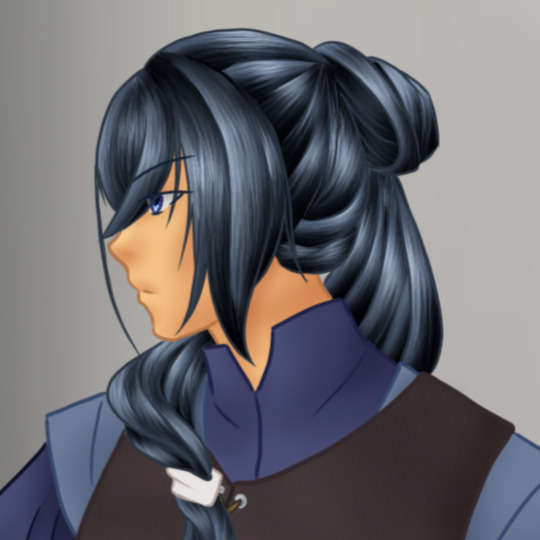


They're three of the so far six OCs introduced in my fic Winds of Wolfsong (soon to be seven to be eight to be— damn why does the cast keep expanding?!) (oh wait I know why, because Tanaka didn't provide me with enough characters from certain social classes to fill the gaps for the kind of story I want to tell, which isn't necessarily his fault, he wanted to tell a war epic, I wanted to tell a character and emotion driven story with themes of cooperation coexistence and community, how creation is sacred and way harder than destruction, which necessitates the appreciation of those outside of the nobility and warrior classes to shine light on the crafters and the servants, also magic plays a much bigger role both in the present and in the defeat of Zahhak which led me to fill in the gaps with even MORE OCs... damn), these three in particular debuted in the first chapter. From left to right are: Kashi (AU!Arslan's biological mother), Ayunnen (AU!Arslan's biological father, married to Kashi), and Kazai (Kashi's younger brother, AU!Arslan's biological uncle who makes a return in chapter 2).
33 notes
·
View notes
Text
As the wise hibbyscus said
Hear me out: The way Daryun locked Bahadur's arm during the fight
Did you saw those veins.....pumping👀
15 notes
·
View notes
Text


"art" here is defined in the broadest of terms. they are vocal and grating about their opposite opinion. imagine the worst possible options. if you are against "marriage," then this is defined as living with a partner.
#Poll#Manga#Hiromu Arakawa#Shipping#daryun#narsus#((I'm sorry but Daryun's expression the last panel is so important to me. He has missed Narsus So Much))#Meta#Because this isn't actually a fandom poll
2K notes
·
View notes
Text
Chapter 127 is now available on Mangasee123!
19 notes
·
View notes
Text

Guess who’s back? 😎
25 notes
·
View notes
Text
Arslan Senki Reread
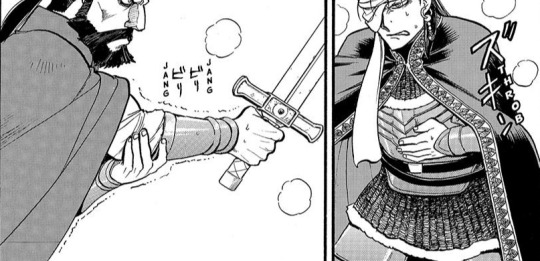
Nice to see their blows impacting them. And damn, Andragoras' knee could be felt even through metal armor? He's terrifying.

HA, MY PRIMARY GUESS WAS RIGHT. The sorcerers either left or were removed when Osroes took the throne!
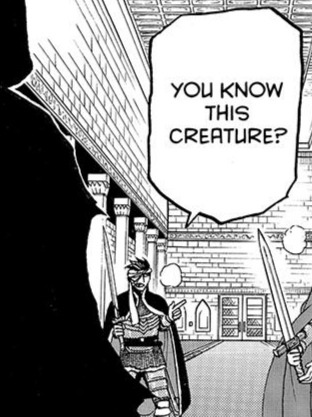
Hilmes is just. Out of the loop a lot of the times, huh? He doesn't know a lot of things, especially in the novels part 2, where he didn't even know of Zahhak's return nor any of the magical bullshit taking place during that time.
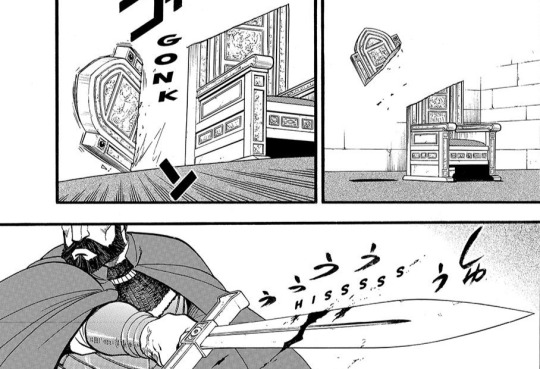
How'd he— okay, forget everything else, what's that fucking sword made of that it didn't snap in half or even crack??????????????

I don't think Zandeh would buy that at all, Hilmes.
Actually, what does Zandeh think of this at all???
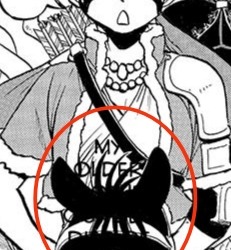
What's going on with this panel. Why is there text here. “My older...”??????

They're shookie like a cookie.
Man, what a thing to hear.
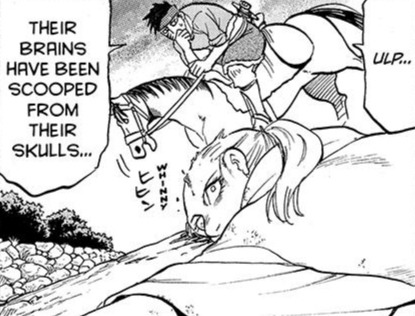
The eyes on the woman are really unsettling me. Yikes.

And now Zahhak takes the stage. We're getting a new chapter this month, right? Oh god I'm so anxious 😭😭😭
And fellas friends and fiends, with this we officially have caught up with the manga! The Arslan Senki Reread project is officially done... this round, at least. I'm sure I'll be rereading this manga again and again, though whether or not I make another round of posts is another matter. Maybe I'll just post little random panels when I feel like it. I feel like for now I've exhausted my thoughts and what I want to say in this round.
Until I start another reread round, this reread tag and project has come to an end!
This was quite the journey. I hope y'all enjoyed this as much as I did.
If y'all wanna see other posts under this tag:
Reverse chronological tag (works on the web as well as the app)
Chronological tag (works only on the web)
13 notes
·
View notes
Text
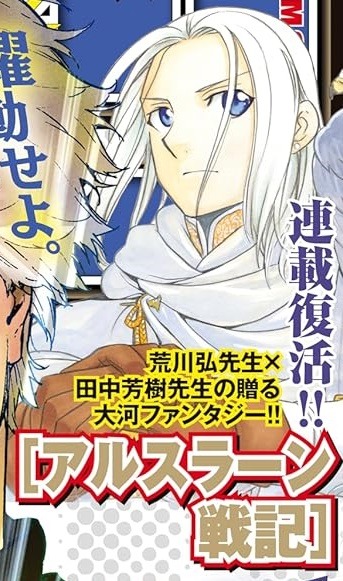
TOMORROW
35 notes
·
View notes
Text
Winds of Wolfsong chapter 2 is now up on AO3!
The pinned post is now edited to reflect the chapter count.
51 notes
·
View notes
Text
So in chapter 2 of my fic Winds of Wolfsong I was originally going to go much more in-depth with Nowruz, the new-year celebration, what with food and all, I even collected notes.
However, I did not actually end up including a lot of the stuff in the chapter itself, most of it didn't even end up being written into the first draft. I was gonna figure out the incorporation of symbolism as I wrote, which didn't end up happening, whoops.
But I gathered notes, they'll probably come into use in the future and hey, y'all might be interested and find some use out of those too.
Sizdah Bedar (Persian: سیزدهبدر – sīzdah bedar), (lit. 'Thirteen outdoor') also known as Nature's Day (روز طبیعت – rūz-e tabī'at), is an Iranian festival held annually on the thirteenth day of Farvardin, the first month of the Iranian calendar (and the first month of spring, during which people spend time picnicking outdoors. It marks the end of the Nowruz holidays in Iran.
This actually made it into the fic, what with the little family going out for a picnic in the morning, though they did the actually get to have the picnic due to... stuff happening. Isfan says:
Today is the thirteenth of the new year, the last of Nowruz, the second one without Lady Jahanara.
So... yeah!
A custom performed at the end of the picnic is to throw the sprouted greens (سبزه – Sabze) that were part of the traditional Haft-Seen Nowruz display into moving water.
In the chapter Isfan says:
They would cast the Sabzeh sprouts in this stream afterwards, all of them, together.
It is actually customs for young people to knot the sprouts together if they're wishing for marriage partners, it didn't get mentioned in the chapter because nobody was looking for a marriage at the moment. Shapur is resolute to not wed, the kids are too young, Sanira and Behnam are married to each other.
Sekanjabin (Persian: سکنجبین), one of the oldest Iranian drinks, is made of honey and vinegar. Sekanjabin is usually served in summer. It is sometimes seasoned with mint. It is very popular in summer, but it is also an inseparable part of Sizdah Bedar. Iranians eat lettuce with Sekanjabin. This act is symbolically a promise to stay healthy during the New Year. Sekanjabin is a compound of سرکه serke "vinegar" and انگبین angabin "honey".
I at the very least wanted to include Sekanjabin buuuuuut I couldn't find the space. Oh well, it'll have to be put in cryosleep for future use.
Ash-e doogh, (Persian: آش دوغ), also known as "yoghurt soup", originates from the Azeri region of northwest Iran and is one of the traditional soups of Ardabil. It is a common dish found in many regions and cultures within West Asia, including Iran, Azerbaijan, and Turkey. Ash-e doogh is a soup usually made with yogurt or doogh, as well as different kind of herbs (such as coriander, leek, tarragon, mint, and parsley), vegetables (such as spinach, purslane, chickpeas, peas, onion and garlic), lamb meatballs, eggs, rice, salt and several types of spices. Fried mint with oil (and sometimes garlic) is used as a topping for the soup. This soup can be made vegetarian.
Doesn't have much of a symbolic thing going on, just collected in case I may need it.
One of the most common foods cooked on the occasion of Nowruz is Samanu (Samanak, Somank, Somalek). This food is prepared using wheat germ. In most countries that celebrate Nowruz, this food is cooked. In some countries, cooking this food is associated with certain rituals. Women and girls in different parts of Iran, Afghanistan, Tajikistan, Turkmenistan and Uzbekistan cook Samanu in groups and sometimes during the night, and when cooking it, they sing memorable songs.
Samanu did actually make it... into a discarded draft. I ended up erasing the sentence and I can't find it again but it was just a passing mention of the brothers having it with bread for breakfast. Samanu does have a symbolic meaning, especially associated with Nowruz, as it is one of the seven items placed on the Haft-sīn table during the celebration.
The Haft-Seen table is composed of “haft” (or seven) essential symbols that represent nature, and “sin” which may have been shortened from “sini” (or trays), which held these essential symbols. The symbols break down into three from the material world (or “donyaheh mahdoodiat”), three from the immaterial world (or “donayeh maanah”) — this is the world of meaning and ideas — and one symbol that sits between and ties these two worlds together.
×
By tradition, Iranian families take great pains to create the most beautiful Haft-Seen table that they can, for not only does it embody values both traditional and spiritual, it is also appreciated by the visitors during Nowruz visiting exchanges as a reflection of the families' aesthetic sense and good taste.
×
Typically, before the arrival of Nowruz, family members gather around the Haft-sin table and await the exact moment of the March equinox to celebrate the New Year. The number 7 and the letter S are related to the seven Ameshasepantas as mentioned in the Zend-Avesta. They relate to the four elements of Fire, Earth, Air, Water, and the three life forms of Humans, Animals and Plants. In modern times, the explanation was simplified to mean that the Haft-sin (Persian: هفتسین, seven things beginning with the letter sin (س)) are:
• Sabze/Sabzeh (Persian: سبزه), Sprouting/Grass – wheat, barley, mung bean, or lentil sprouts grown in a dish, the symbol of rebirth and growth.
• Samanu (Persian: سمنو) – sweet pudding made from wheat germ, the symbol of power and strength.
• Senjed (Persian: سنجد) – Persian olive, the symbol of love.
• Serke/Serkeh (Persian: سرکه) – vinegar, the symbol of patience.
• Sib/Seeb (Persian: سیب) – apple, the symbol of beauty.
• Sīr/Seer (Persian: سیر) – garlic, the symbol of health and medicine.
• Somāq/Somagh (Persian: سماق) – sumac, the symbol of sunrise.
Man, reading the notes again, I wish I could've found a way to incorporate this but oh well, no use lamenting over it now. I'm sure I'll find some use of it in the future.
But they're not the only items on the Haft-sīn table.
Items that don't start with "س" but, nonetheless, are invariably included:
• Tokhm-e Morg Rangi (تخممرغ رنگی): Eggs, the symbol of fertility.
• Ayina (آینه): Mirror, the symbol of self-reflection.
• Shem'a (شمع): Candle, the symbol of enlightenment.
• Maahi-ye Qırmız (ماهی قرمز): Goldfish, the symbol of progress.
• Ketaab (کتاب): Book, the symbol of wisdom.
I'm less bummed about those because I wasn't determined to include them anyways but here they are nonetheless!
I don't know when they'd take down the Haft-sīn table, if they would've taken it down yet, so I may be able to squeeze some use out of it yet. We'll see.
@innerchorus You said you were interested so here ya go!
15 notes
·
View notes
Text
The Sorcerer: got some straight gas 🔥😛 this strain is called “rightful king” 😳💊 you’ll be zonked out of your gourd 💯
Hilmes: yeah whatever. i don’t feel shit.
5 minutes later: dude we gotta retake Ecbatana
His astute follower Sahm, pacing: Husrab is lying to us
#the heroic legend of arslan#Arslan Senki#Humour#Hilmes#Sahm#The magician#((I always feel bad poking fun at Hilmes but I've seen this meme with two books I've read now hnnng))
11 notes
·
View notes
Text
When I'm completely done with everything I do want to put together a video that will be a little bit nicer than this, but I thought that it might be fun to see! Especially because I wasn't always tagging it at the beginning so people may not have seen the early stages.
36 weeks of work so far (with a 2 month break not pictured lol)
13 notes
·
View notes
Text

ARSLAN SENKI (2013-?)
by arakawa hiromu
11 notes
·
View notes
Text
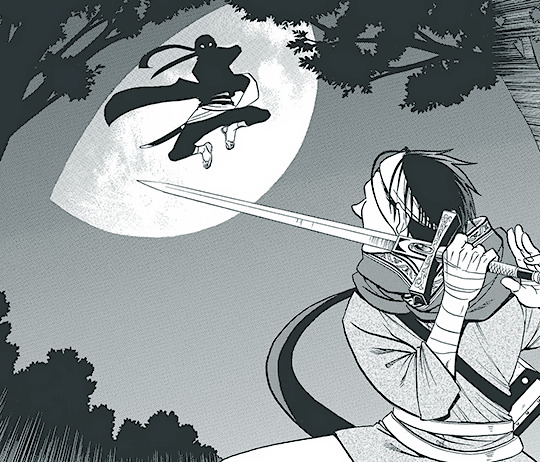
ARSLAN SENKI (2013-?)
by arakawa hiromu
17 notes
·
View notes
